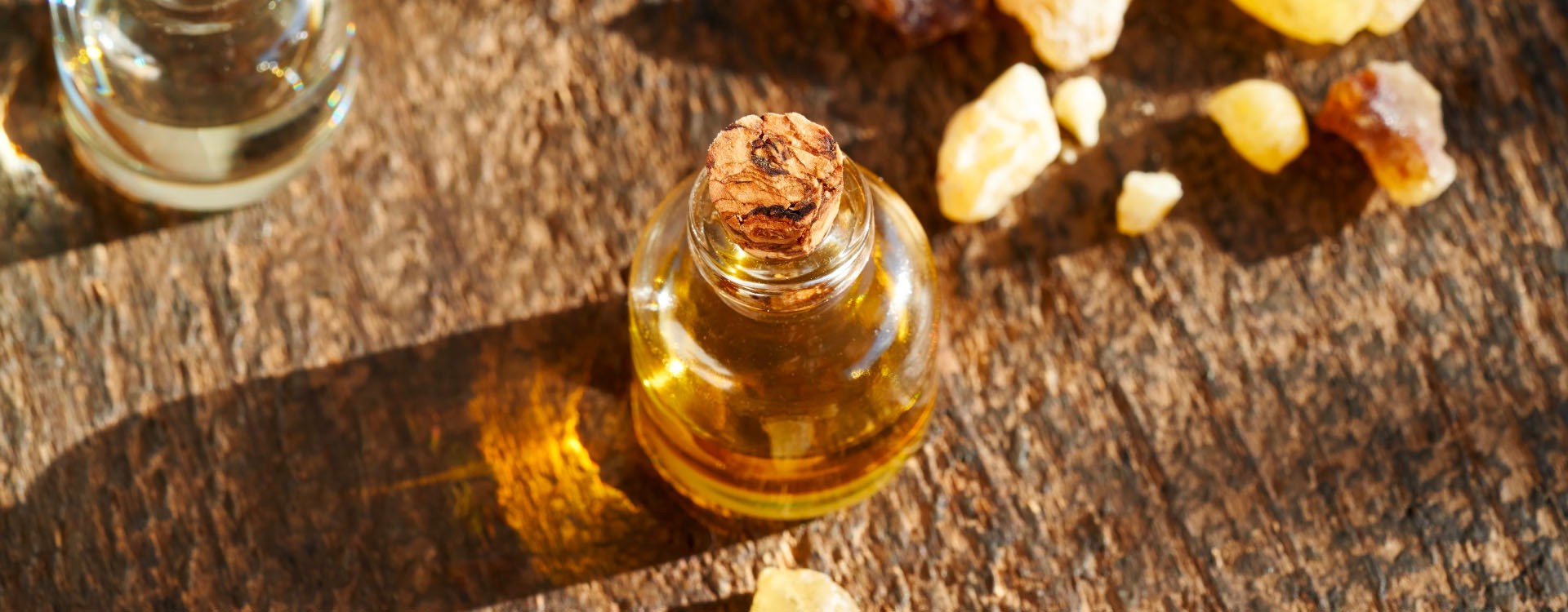Olibanum: A Treasure from the Horn of Africa and the Arabian Peninsula

Olibanum: A Treasure from the Horn of Africa and the Arabian Peninsula
Frankincense is a natural resin derived from the Boswellia tree, which grows mainly in the arid regions of the Horn of Africa and the Arabian Peninsula. These lands, marked by extreme climatic conditions, are the cradle of this age-old treasure.

Land of frankincense
Olibanum is mainly harvested in three regions of the world:
- The Sultanate of Oman
Located in the south-east of the Arabian Peninsula, Oman is famous for producing one of the world's most prized olibanum products. The mountainous regions of Dhofar, particularly around the city of Salalah, offer a unique climate conducive to the growth of Boswellia sacra trees, the most renowned for the quality of their resin.Omani incense, often considered the purest, was once reserved for religious and royal ceremonies.

- Somalia and Puntland
The Horn of Africa, in particular the Puntland region of Somalia, is another major producer of frankincense. The Boswellia carterii tree yields a resin of great olfactory richness, appreciated for its earthier, spicier notes.
- Yemen
Southern Yemen, especially the Mahra region, is also known for its high-quality olibanum, traded for millennia along the incense routes.these areas, once traversed by the ancient incense routes, produce a resin that has been traded for millennia throughout Arabia, the Mediterranean and as far afield as India.
A Culture in Symbiosis with Nature
The cultivation of frankincense is based on a respectful relationship between man and nature. Boswellia trees only begin to produce quality resin after about ten years.
Harvesting is a delicate process: incisions are made in the bark of the tree to allow the resin to flow out. It then takes several weeks for the resin to dry out and be ready for collection.
The local communities who harvest frankincense are the guardians of this ancestral knowledge. These practices, handed down from generation to generation, are essential to ensure the longevity of the trees and the quality of the resin. In Oman, Somalia and Yemen, frankincense harvesting is not only a tradition, but also a crucial source of income for local populations.
Frankincense through the ages
Frankincense is one of the oldest products in international commerce, used for thousands of years in religious, medicinal and aesthetic contexts.
. As early as the 3rd millennium BC, frankincense was at the heart of vast trade networks stretching from the Arabian Peninsula to the Mediterranean. The incense routes, which crossed the deserts of Arabia, were used by caravans transporting this precious resin to the great urban centers of the time, such as Petra, Alexandria, Rome and Babylon.
The use of frankincense dates back to ancient Egypt, where it was burned in temples to honor the gods. The Egyptians also used it in the mummification process for its antiseptic properties, and as an ingredient in sacred ointments and perfumes.
In Ayurvedic medicine, it is known for its anti-inflammatory and soothing properties. Ancient Greek and Roman physicians such as Hippocrates and Galen prescribed it to treat a variety of ailments, including respiratory and digestive problems.
The Thousand Virtues of Olibanum: A Treasure for Your Daily Well-Being
For thousands of years, frankincense has held a place in the hearts of civilizations. Today, more than ever, it is part of our modern lives, enriching our daily well-being.
Purified Air, Soothed Body

When diffused, frankincense releases wisps of smoke that dispel negative energies and uplift the spirit. It's an invitation to a moment of inner calm.
In essential oil form, it becomes a powerful ally for your body. A few drops in a vegetable oil and you're ready for a massage that relaxes muscles and soothes tension. Olibanum is renowned for its anti-inflammatory and anxiolytic properties. It works deep down, releasing physical and emotional knots and offering you a moment of pure relaxation.
Used in cosmetics, frankincense reveals another facet of its benefits. Its regenerating virtues make it an ideal ingredient for revitalizing the skin. Used as a serum or cream, it helps reduce wrinkles, even out skin tone and heal minor imperfections. It adds a gentle, effective touch to your beauty routine.
How to incorporate frankincense into your daily routine?
Whether you use it to purify your home, soothe your body or beautify your skin, frankincense is a true natural benefit.
Here are a few simple ideas for enjoying the benefits of frankincense:
Diffusion: Use an essential oil diffuser to purify the air.
Massage: add a few drops of olibanum essential oil to a vegetable oil for a soothing massage.
Cosmetic care: Mix a drop of frankincense essential oil with your moisturizer.
Olibanum and its Synergies with Other Essential Oils

Olibanum essential oil, with its woody fragrance, is renowned for its soothing and regenerating properties. When combined with other essential oils, its effects can be amplified.
Relaxation synergy: Olibanum, Lavender and Roman Chamomile
For a soothing atmosphere after a long day, mix a few drops of frankincense essential oil with true lavender and Roman chamomile.
Synergy for the Skin: Olibanum, Geranium Rosat and Italian Helichrysum
For radiant, deeply nourished skin, combine olibanum essential oil with rose geranium and Italian helichrysum.
Vegetable Oils: Vehicles for Olibanum
Vegetable oils maximize the benefits of olibanum treatments.
Jojoba oil: Balancing and protective.
Jojoba oil, with its light texture, is very similar to human sebum, making it ideal for all skin types. It regulates excess sebum and protects the skin from external aggressions, while promoting rapid absorption of essential oils.
Argan oil: Nourishing and repairing.
Renowned for its nourishing properties, argan oil is rich in vitamin E and essential fatty acids. It is perfect for deeply moisturizing and repairing dry, mature skin. Combined with olibanum essential oil, it becomes a luxurious treatment for face and body.
Rose Hip Oil: Anti-aging and regenerating.
Rosehip oil is renowned for its anti-aging power and exceptional regenerating properties. Rich in natural retinol (vitamin A), it is the ideal ally of olibanum essential oil for reducing wrinkles, diminishing scars and restoring radiance to the complexion.
Example of a Facial Routine with Olibanum and Carapate Oil
Step 1: Gentle cleaning
Cleanse your face with a mild cleanser suited to your skin type.
Step 2: Application of the Regenerating Serum
After cleansing your face, apply a serum based on olibanum essential oil and carapate oil.
Mix 2 drops of frankincense essential oil and 10 ml of carapate oil in a small amber bottle.
Apply 4 to 5 drops of this serum to the entire face and neck.
Massage gently in circular motions to encourage oil penetration.
Step 3 (optional) : Localized treatment
To target wrinkles or particularly dry areas, apply an additional drop of olibanum essential oil to the areas concerned.




